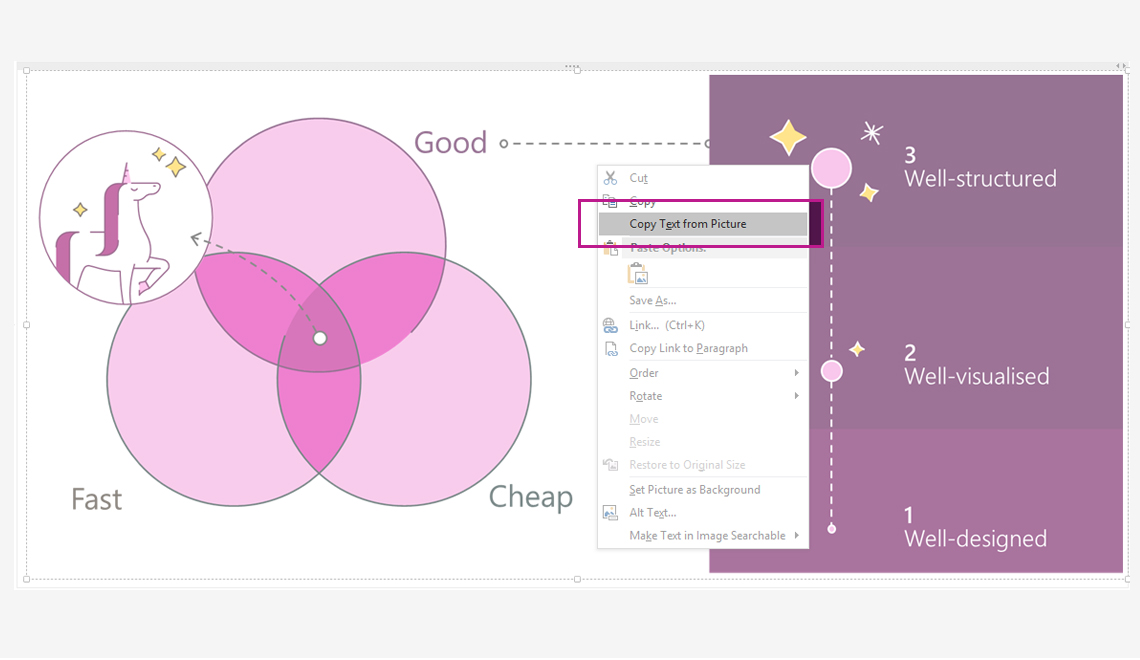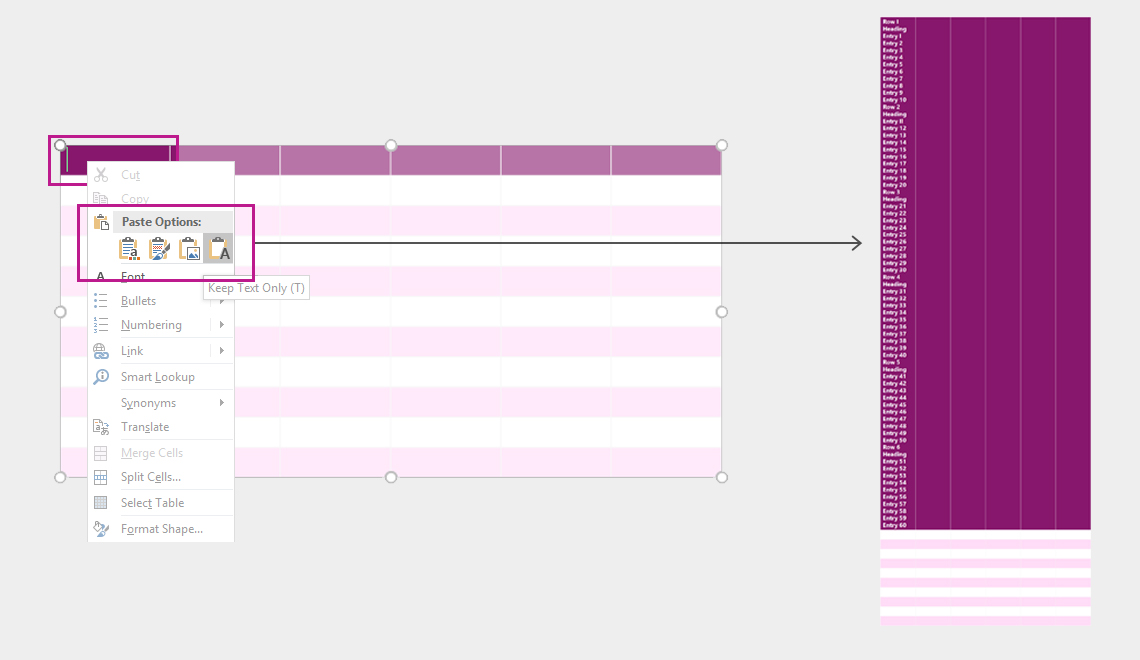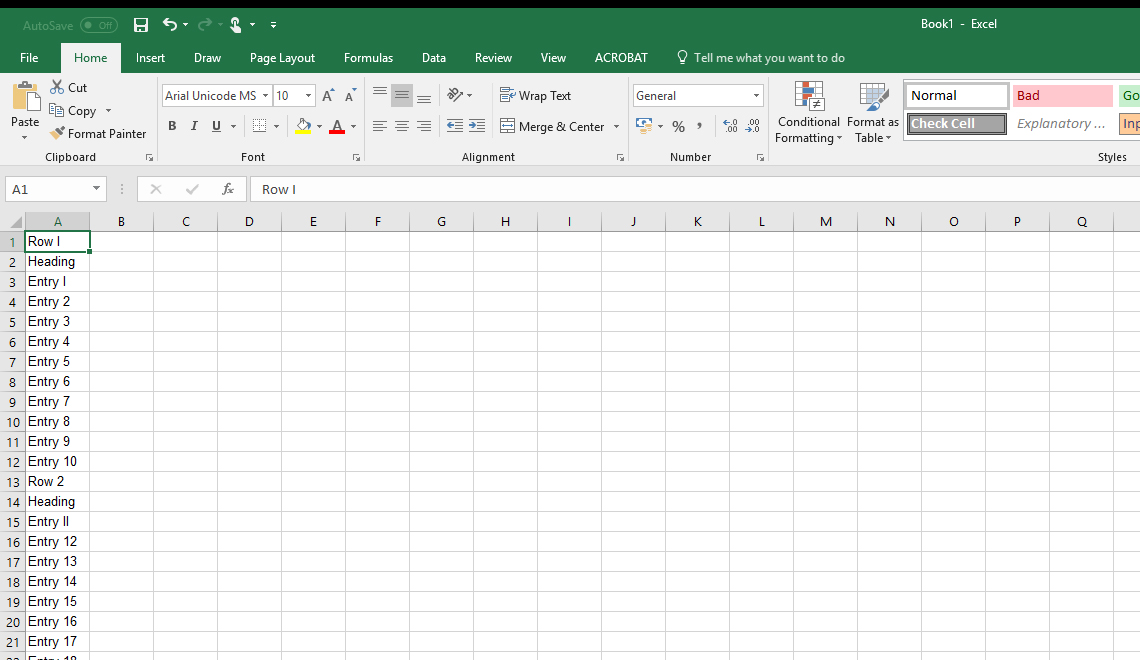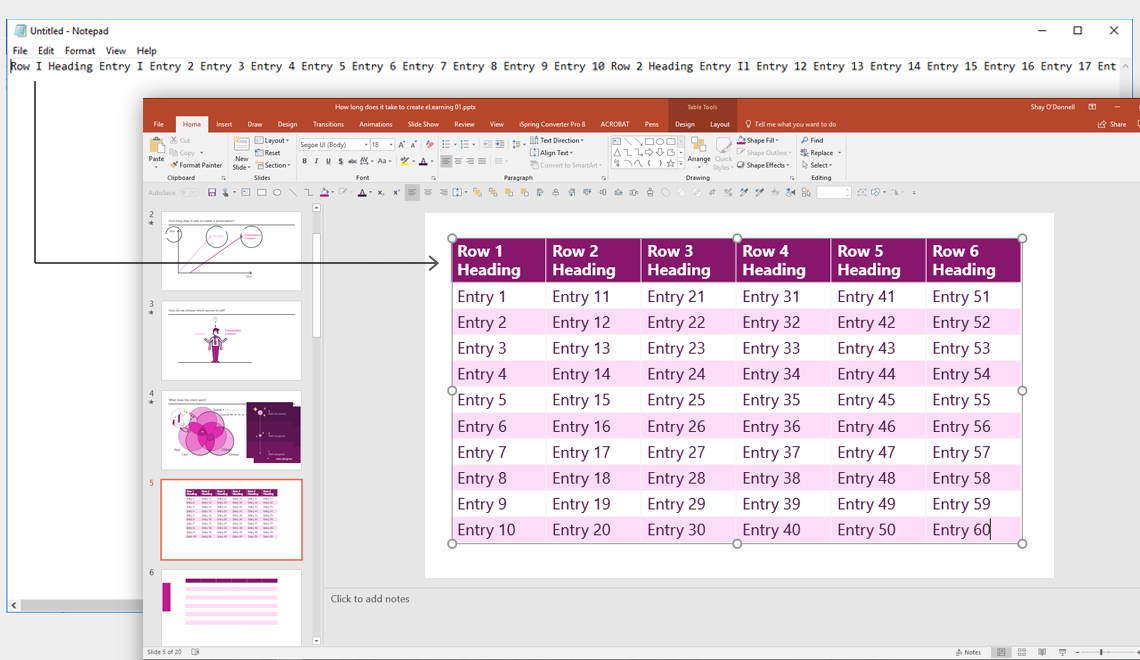- PowerPoint design
- Comments: 4
With a bit of clever coding, and some BrightCarbon magic, you can create Smart Icons and Illustrations in PowerPoint.

Have you ever started working on a presentation to find that pieces of content have been pasted in as images instead of editable text? Have you then spent the next 2 hours typing text into a new table or diagram thinking that it’s a huge waste of time? Well there is a huge time-saving hack out there to make your life so much easier. Here’s all you need to know to convert images to text in PowerPoint.
In order to make the magic happen, you’re going to need Microsoft OneNote. Copy your image and paste it into OneNote. Right click the image and choose the option ‘Copy Text from Picture’.
You can now paste the text back into PowerPoint and there you have it – hours saved!

Things to consider: You’ll need to check your copy after it’s been extracted. OneNote is pretty good at recognising text, but things like capital letters, punctuation, and spacing might not be consistent with the original text. Be sure to give it a proof-read before you pop it back into PowerPoint.
This trick works really well for diagrams, but how about tables?
If we do our trick to convert images to text in OneNote with a table, true we get all the text out, but then when we paste it back into PowerPoint, it doesn’t recognise that all the entries require a different cell, and this happens:

So for a huge table, we then have to spend hours copy/pasting all the cells into the right place. I think you’ll agree that this isn’t a good use of anyone’s time.
But there is a solution…
Instead of taking your pasted-out text and putting it straight back into PowerPoint, if you paste it first into Excel it recognises that each entry requires a different cell, and that formatting is preserved when you paste over into PowerPoint.

Occasionally this trick doesn’t work, but again, there is a solution. Paste the text into Notepad – this should strip out any peculiarities in the formatting – and then paste in to Excel and back into PowerPoint.

So there we have it, earn your PowerPoint productivity stripes with this simple trick and save yourself a lot of time along the way. And if you can’t get enough of tricks and hacks, why not head over here for a free download of a sheet of PowerPoint keyboard shortcuts.
Leave a commentWith a bit of clever coding, and some BrightCarbon magic, you can create Smart Icons and Illustrations in PowerPoint.
Are you frustrated by the wheel animation in PowerPoint? Do you want it to animate anti-clockwise, or from a different starting point? Look no further.
Icons are a fantastic and versatile way of making your presentations more visually engaging. However, icons can also end up being at best decorative or at worse distracting when not used carefully. Learn three tips for choosing the right icons for your presentations.
Join the BrightCarbon mailing list for monthly invites and resources
Tell me more!BrightCarbon staff are knowledgeable with excellent skills, and are unfailingly enthusiastic for each new presentation.
Sarah Appleton Brown Practice Plus Group

Bonjour. Mouais.encore une fois, quelquun tire à boulets rouges sur PowerPoint. Même si quelques bons conseils sont donnés à la fin, avec une excellente référence, combien iront lire jusquau bout ? Pourquoi toujours mettre en défaut le logiciel ? Lorsquun texte est bâclé, incrimine-t-on Word ? nest-ce pas plutôt le rédacteur, le concepteur à incriminer ? Je suis formateur de présentation assistée par ordinateur, et que cela soit Bunkr, PowerPoint, Impress, Prezi ,Sway ou nimporte quel logiciel de PréAO, lorateur, sil souhaite toucher un maximum de personnes, peut soutenir ce quil dit par du visuel. Lêtre humain est dabord visuel.(écrire nest du « visuel », cela demande une analyse). Encore faut-il savoir faire un diaporama adapté ! Arrêtons de titrer nos post et dalerter sur le logiciel. Formons-nous et nincriminons pas le logiciel. Pourquoi est-ce toujours la faute des autres ! le problème est souvent entre le fauteuil et lordinateur. Avant dallumer lordinateur, allumons le cerveau et réfléchissons sur papier. Transposons les mots en visuel. Un diaporama est un document à voir, pas à lire.
Bonjour Andrey,
Nous sommes tout à fait d’accord avec vous en ce qui concerne l’usage de visuels lors de la conception de présentations. C’est bien même la base de tout ce que nous faisons à BrightCarbon ! Si vous en avez le temps (et l’envie !), je vous invite à parcourir le reste de notre blog ou à vous inscrire à nos masterclasses, qui regorgent de conseils pour éviter un trop plein de texte dans vos présentations.
Et loin de nous l’idée de taper sur PowerPoint. C’est avant tout notre outil principal, et nous sommes toujours prêts à faire découvrir nos astuces à la communauté, que ce soit au niveau du design, des animations ou bien résoudre des bugs occasionnels.
Pour en revenir plus précisément à cet article, bien qu’il soit évidemment plus effectif de ne pas avoir de tableaux ou de schémas avec beaucoup de texte sur une diapo, il y a certains cas où cela ne saurait être évité. Dans ce cas, notre astuce détaillée plus haut est particulièrement utile pour récupérer le texte d’une image afin de pouvoir le modifier si besoin est.
Bien cordialement,
Ingrid
Thank you very much for this!!!
Thanks Taavi Dreel,
in this video there’s an alternative:
From: Nuts & Bolts
https://www.youtube.com/watch?v=NTvbOa7uRTI
1 > paste to Word your image as png
2 > Conver Word to PDF
3 > Convert the PDF to Word (it comes as a table)
4 > Copy the Table to PowerPoint
Oh. My. Goodness. I wish I had known this a long time ago and saved many hours of typing. Thank you so much for this. Many hours of course-creation saved going forward 🙂